Don’t Buy a House in These 12 US Cities That Are Overpopulated

Deciding to buy a house in a city, live in a suburb or rural area can be challenging. Being close to the action comes with higher costs of living, higher demand for housing and increased utilities, expenses, property prices and taxes. And lots and lots of people.
Read Next: 7 Locations Where Housing Prices Are Plummeting Post-Pandemic
Learn More: 4 Genius Things All Wealthy People Do With Their Money
If you like your space, there might be better places to buy a house or settle down with a rental than the bigger urban areas. But not all cities with large populations are cramped. When looking at a city, it’s important to check out how densely populated it is to decide whether it’s too crowded or overpopulated for your liking.
For example, Los Angeles is the second most populated city in America. As of Jul. 1, 2023, the census population is estimated to be 3,820,914. But it’s also spread across 470 square miles, giving it a population density of around 8,304, which places it further down the list of the most crowded cities in the U.S. (#27 on Rent.com’s Most Crowded Cities in America rankings).
In terms of land area, the four largest cities in the United States are all in Alaska: Sitka, Juneau, Wrangell and Anchorage. But their collective population sits around 325,000, with over 87% coming from Anchorage. Anchorage is one of the least populated “big” cities in America, with a population density of around 169 residents in its 1705 square mile area.
Using the 2020 U.S. Census Bureau population estimate base, the TIGER® database for land area and its residents per square mile statistics. Here are the 12 most overcrowded cities in the U.S. with more than 50,000 people and at least 10 square miles in size.
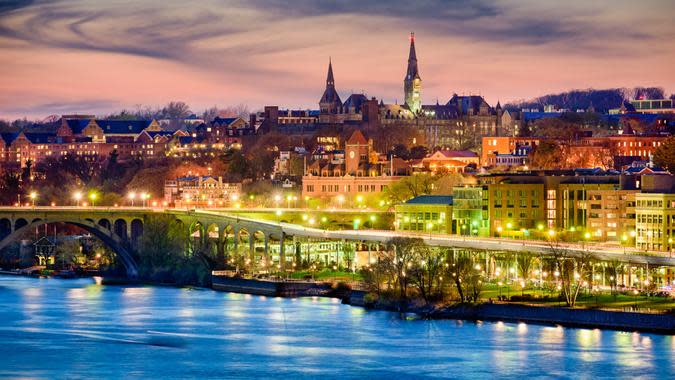
12. Washington, District of Columbia
Residents per Square Mile: 11,281
Total Population: 689,548
Land Area in Square Miles: 61.13
The federal district of Washington, D.C., only has 60 square miles of land but they’re packed tight with residents. The city’s population is under 7800,000. However, workers from neighboring cities such as Maryland and Virginia tend to swell during the work week. The current population of the Washington metro area is much higher at 5,545,000, per Macrotrends.
For You: Dave Ramsey: Why You Shouldn’t Pay Off Your Mortgage Early Even If You Can
Try This: Don’t Buy a House in These 5 US Cities That Have Shrinking Populations and Fewer Buyers
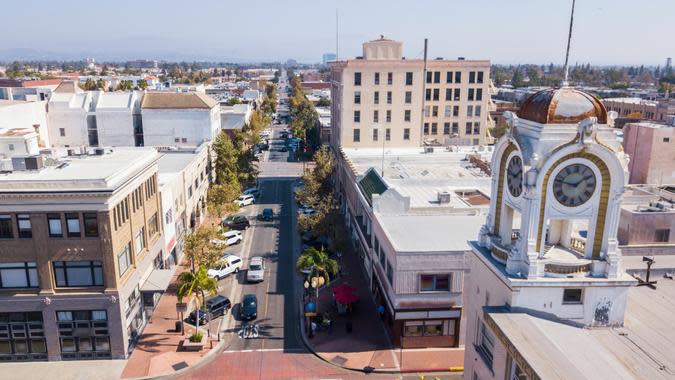
11. Santa Ana, California
Residents per Square Mile: 11,347
Total Population: 310,557
Land Area in Square Miles: 27.34
While California’s population density is only around 253 people per square mile, its most populated cities are dense. Santa Ana serves as the county seat and is the second-largest city in Orange County (behind Anaheim). The average household in this city is 4.04 people. Compared to the national average of 2.6 people per household.
Trending Now: 5 Types of Homes That Will Plummet in Value in 2024
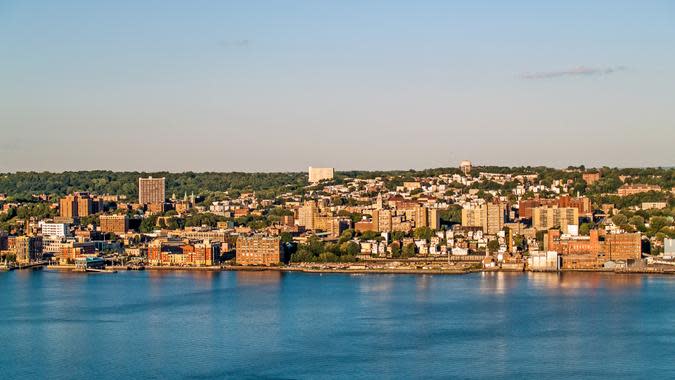
10. Yonkers, New York
Residents per Square Mile: 11,750
Total Population: 211,584
Land Area in Square Miles: 18.01
Situated adjacent to New York City, Yonkers provides the economic advantages of the country’s biggest city and is the gateway to the Hudson Valley. Yonkers is one of the most diverse cities in New York. “With 31% of residents foreign-born, 46% of households speaking a foreign language and a school district comprised of students hailing from 100 different cultures and nationalities,” per the city’s site.
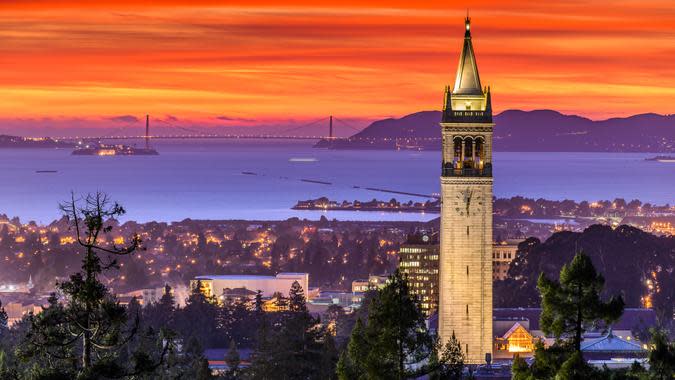
9. Berkeley, California
Residents per Square Mile: 11,917
Total Population: 124,326
Land Area in Square Miles: 10.43
According to the 2020 Census Bureau, although only slightly bigger than 10 square miles in area, Berkeley’s population grew 10% from 2010 to 2020. This included 39% and 15% increases in Hispanic and Asian populations, respectively.
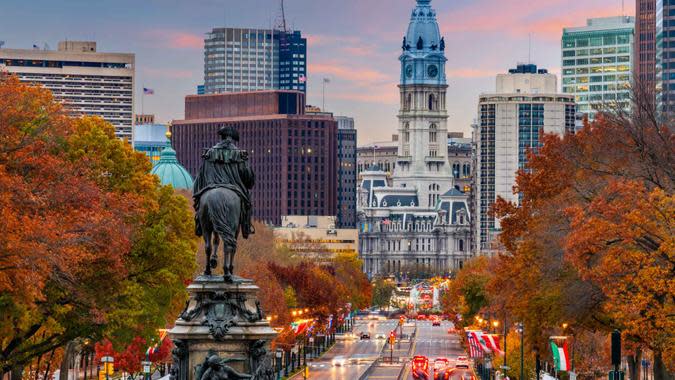
8. Philadelphia, Pennsylvania
Residents per Square Mile: 11,937
Total Population: 1,603,793
Land Area in Square Miles: 134,36
Philadelphia is a top-tier city known for its diversity, arts, music, food, culture, history and sports. The metro population grew by about 4,200 residents between 2020 and 2023. However, it lost about 16,000 people in the city proper during the same time period, according to Axios.
Explore More: Is Barbara Corcoran Right About the Housing Market?
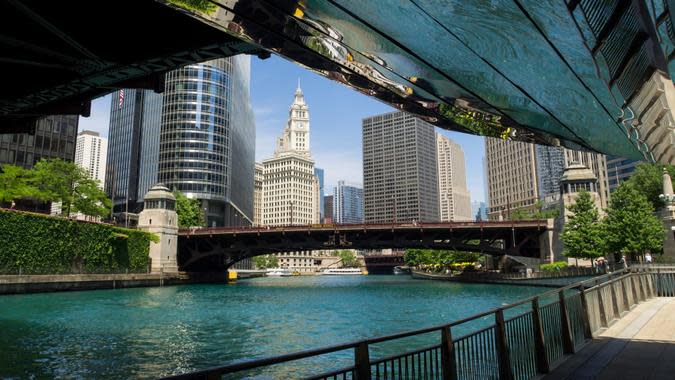
7. Chicago, Illinois
Residents per Square Mile: 12,060
Total Population: 2,746,352
Land Area in Square Miles: 227.73
Chicago is still America’s third most populous city, with over 2.7 million residents across 50 wards, 77 communities and 178 neighbors. However, its population declined by 0.3% between 2020 and 2023. Chicago has been awarded America’s Best Big City seven years in a row by Condé Nast Traveler.
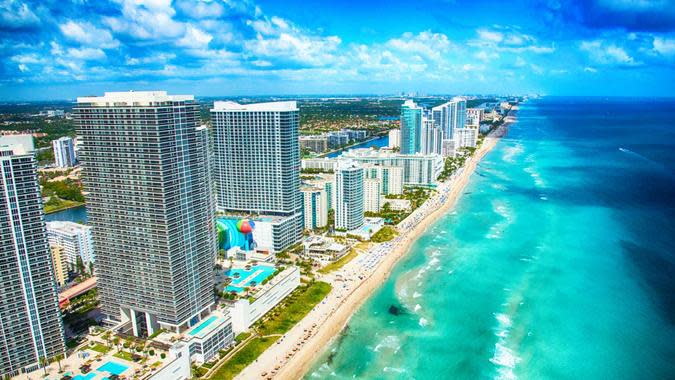
6. Miami, Florida
Residents per Square Mile: 12,286
Total Population: 442,260
Land Area in Square Miles: 36.00
Miami is officially hot. It attracts new residents every year despite its blistering heat and humidity. This city’s population has increased by 3.03% since the most recent census, and is currently growing at 0.74% annually, per World Population Review.
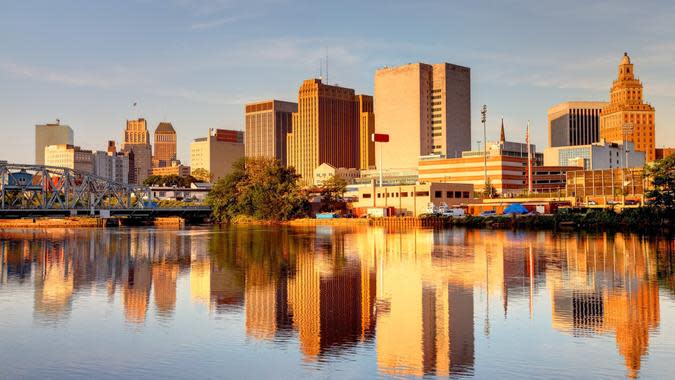
5. Newark, New Jersey
Residents per Square Mile: 12,904
Total Population: 311,553
Land Area in Square Miles: 24.14
Newark is one of the oldest cities in the United States. It was settled in 1666, named a township in 1693, and incorporated as a city in 1836. Although it’s the most populated city in New Jersey, it’s not the most overpopulated (that honor belongs to Jersey City). Known for its diversity, the largest Newark racial/ethnic groups are Black (45.4%) followed by Hispanic (37.2%) and White (9.4%), according to Cubit’s Demographics Report.
Find Out: Housing Market 2024: 5 Florida Cities That Are Suddenly Affordable
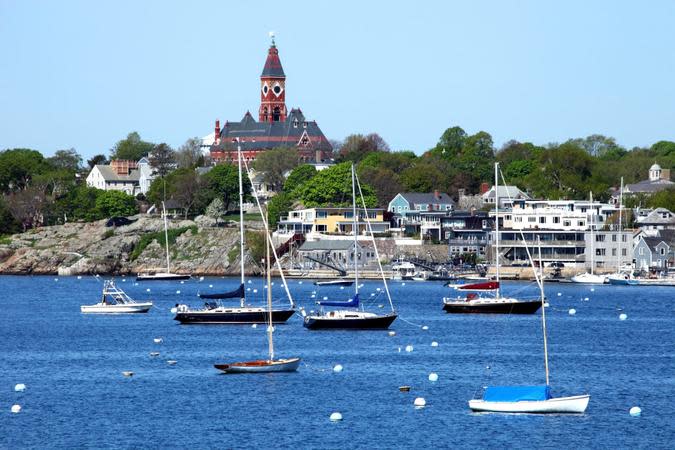
4. Boston, Massachusetts
Residents per Square Mile: 13,977
Total Population: 678,617
Land Area in Square Miles: 48.34
Somerville and Cambridge are more overcrowded than Massachusetts’ most populous cities. Still, they aren’t included here due to the land area (Somerville is smaller than 10 sq mi), and Cambridge has under 100,000 residents. The Greater Boston area is crowded. However, it has some of the highest rent prices in the country.
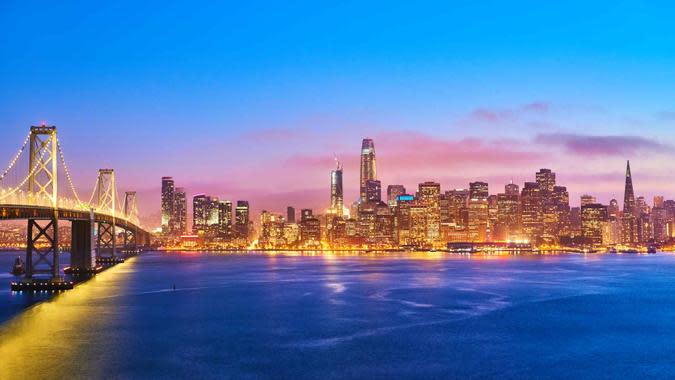
3. San Francisco, California
Residents per Square Mile: 18,629
Total Population: 873,950
Land Area in Square Miles: 46.91
With a population density of 18,629 people per square mile, San Francisco is California’s most densely populated city and the third most overpopulated city overall in the United States. The City by the Bay lost 7.4% of its population between 2020 and 2023, according to the Census Bureau, possibly due to people moving to less expensive areas in California during the pandemic.
Read More: Why A Billionaire Bought a Bunch of Homes In Duluth, Minnesota
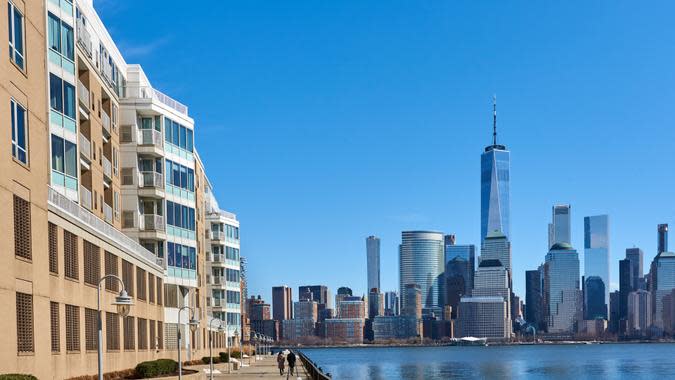
2. Jersey City, New Jersey
Residents per Square Mile: 19,835
Total Population: 292,751
Land Area in Square Miles: 14.74
Owing to its smaller land area (N.J. is the fourth smallest state in the U.S.) New Jersey is the most densely populated state in the U.S. And Jersey City is the most crowded metro in the state — which is more so than Newark. Given its proximity and ease of commuting to bustling New York, it’s sometimes referred to by its unofficial nickname, the “Sixth Borough.”
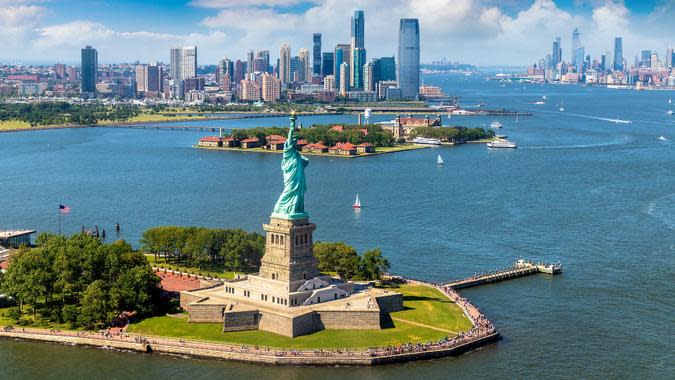
1. New York City, New York
Residents per Square Mile: 29,303
Total Population: 8,804,199
Land Area in Square Miles: 300.45
No huge surprise here. New York is the most populated city in America and has more residents than the totals of nearly 40 other states. Geographically the smallest of the five boroughs, Manhattan is the most densely populated by far.
More From GOBankingRates
This article originally appeared on GOBankingRates.com: Don’t Buy a House in These 12 US Cities That Are Overpopulated

 Yahoo Finance
Yahoo Finance 